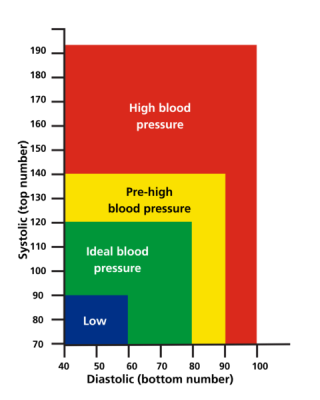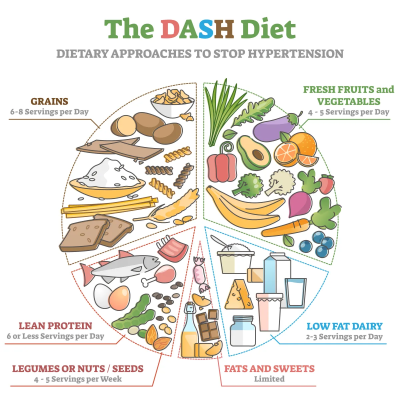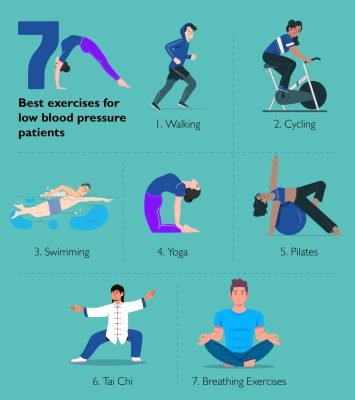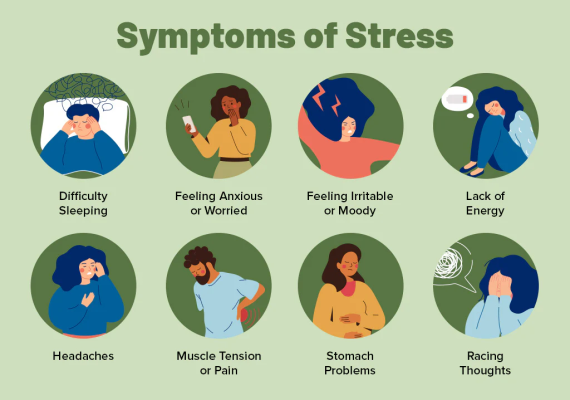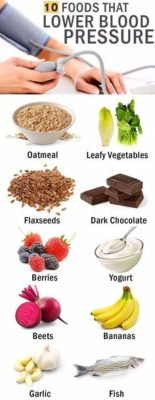How to Low Your Blood Pressure Safely and Naturally
High blood pressure, or hypertension, is often referred to as a silent killer. It can lead to serious health complications, including heart disease, stroke and kidney damage. Fortunately, there are numerous strategies to help you manage and lower your blood pressure effectively. This article will explore how to drop blood pressure, how to relieve hypertension and natural methods that can significantly improve your health.
Understanding Blood Pressure
Before diving into effective strategies, it’s essential to understand what blood pressure is and how it affects your health.
Blood pressure measures the force of blood against the walls of your arteries. It consists of two numbers: the systolic pressure (the top number, indicating pressure when your heart beats) and the diastolic pressure (the bottom number, indicating pressure when your heart rests between beats).
Normal vs. High Blood Pressure Readings
- Normal: Less than 120/80 mmHg
- Elevated:120-129/<80 mmHg
- Hypertension Stage 1: 130-139/80-89 mmHg
- Hypertension Stage 2: 140 or higher/90 or higher mmHg
Regular monitoring is crucial to identify if your blood pressure is too high and to take necessary actions promptly.
To enhance your understanding of blood pressure management, don’t miss our article on the Signs and Symptoms of Hypertension, which will help you identify early warning signs and take control of your health.
Lifestyle Changes for Lowering Blood Pressure
Making targeted lifestyle changes can significantly impact your blood pressure levels. Below are some detailed strategies that can help you learn how to drop blood pressure effectively.
Dietary Modifications
Your diet is one of the most influential factors in managing high blood pressure. Here’s how to make meaningful changes:
✓ Focusing on a balanced diet not only helps in lowering blood pressure but also supports overall health. Incorporate a variety of foods, aiming for at least five servings of fruits and vegetables each day. Leafy greens, berries and bananas are excellent choices. They are rich in potassium, which helps balance sodium levels in the body. Whole grains like brown rice, quinoa, and whole grain bread are also beneficial, as they are high in fiber, which can help lower cholesterol and improve heart health. Additionally, include lean proteins such as fish (especially fatty fish like salmon), poultry, legumes and beans. These proteins are lower in saturated fat compared to red meat, making them heart-friendly options.

The DASH Diet
The DASH (Dietary Approaches to Stop Hypertension) diet emphasizes nutrient-rich foods that promote heart health. This includes increased potassium intake from foods like sweet potatoes, tomatoes, and oranges. It also encourages low-fat dairy products that provide calcium and protein while keeping saturated fat low. Additionally, limiting added sugars can help maintain a healthy weight and lower blood pressure.
Regular Physical Activity
Engaging in regular physical activity is one of the most effective strategies for relieving hypertension.
Aiming for at least 150 minutes of moderate-intensity aerobic exercise each week can greatly benefit your heart. Activities such as
- brisk walking
- jogging
- swimming
- cycling
strengthen the heart, allowing it to pump blood more efficiently, thereby reducing blood pressure.
Incorporating strength training exercises at least two days a week is also beneficial. This could include lifting weights, using resistance bands or bodyweight exercises like push-ups and squats. Building muscle can enhance metabolism and aid in weight management, which is beneficial for lowering blood pressure.
To incorporate exercise into your daily routine, start small if you’re new to it. Gradually increase duration and intensity. Find activities you enjoy, whether it’s dancing, hiking with friends, or biking around your neighborhood. Staying consistent is key; schedule your workouts just like any other important appointment to ensure you make time for them.
Weight Management
Maintaining a healthy weight is crucial in learning how to lower diastolic blood pressure effectively.
Your Body Mass Index (BMI) is a helpful indicator of whether you’re within a healthy weight range. A BMI between 18.5 and 24.9 is generally considered healthy. If you’re overweight or obese (BMI of 25 or higher), even a modest weight loss of 5-10% can lead to significant improvements in blood pressure. Setting realistic goals is essential; aim for gradual weight loss of about 1-2 pounds per week. This approach is more sustainable than rapid weight loss methods.
Keeping a food diary can increase awareness of your eating habits and help you identify areas for improvement. Consider joining a weight-loss group or working with a nutritionist, as having accountability and guidance can make a significant difference in your journey.
Stress Management Techniques
Managing stress effectively is essential for controlling blood pressure. High stress levels can trigger hormonal responses that raise blood pressure, so adopting stress management techniques can make a significant difference.
- Practicing mindfulness and meditation helps promote relaxation and mental clarity. Spend at least 10-15 minutes daily practicing meditation, starting with guided sessions available through apps or online videos. Focus on your breathing, allowing thoughts to come and go without judgment. Over time, this practice can help lower stress and improve emotional well-being. Incorporating mindfulness into your daily routine can also be beneficial. This involves paying full attention to the task at hand, whether it’s eating, walking, or even washing dishes. Mindfulness helps you stay present, reducing anxiety about the future or regrets about the past.
- Yoga is another effective option, combining physical movement, meditation and breathing exercises. Regular practice can help reduce stress and improve flexibility. Look for beginner classes online or at local studios, focusing on styles like Hatha or Yin, which emphasize relaxation.
- Quality sleep is crucial for maintaining healthy blood pressure levels. Aim for 7-9 hours of uninterrupted sleep each night, and establish a calming bedtime routine, such as reading or taking a warm bath, to signal to your body that it’s time to wind down. Make your bedroom conducive to sleep by keeping the room dark and cool, using earplugs or white noise machines to minimize disturbances, and investing in a comfortable mattress and pillows.
It’s also important to limit screen time before bed. Reducing exposure to screens at least an hour before bedtime can help improve sleep quality, as the blue light emitted by devices can disrupt your circadian rhythm.
Finding effective relaxation techniques can greatly alleviate stress and improve your overall mood. Additionally, dedicate time to hobbies you enjoy, whether it’s painting, gardening, or playing an instrument. Engaging in activities you love provides a break from daily stressors and can significantly boost your mood.
Limiting Alcohol and Tobacco
Managing alcohol and tobacco use is crucial for maintaining healthy blood pressure levels. Both substances can significantly impact your cardiovascular health, and making mindful choices about their consumption can lead to better outcomes.
Alcohol can have both short-term and long-term effects on blood pressure. Moderate drinking is defined as one drink per day for women and two for men. When consumed in moderation, some studies suggest that alcohol may have a minor protective effect on heart health.
However, excessive drinking can lead to weight gain, increased blood pressure, and a higher risk of heart disease. To ensure you’re making healthier choices, consider opting for lower-calorie beverages such as light beer or wine, and mix drinks with water or seltzer instead of sugary sodas. Keeping track of your alcohol intake through a journal can also be beneficial. By recording when and how much you drink, you can gain awareness of your habits and make more informed decisions.
On the other hand, quitting smoking is one of the most impactful actions you can take for your health. Smoking not only raises blood pressure but also damages blood vessels, increasing the risk of heart disease and stroke. The benefits of quitting smoking are significant; within weeks, your blood pressure can start to improve.
If you’re considering quitting, there are various resources available to support you, including quit lines, counseling services, and mobile apps designed to help with smoking cessation. Additionally, nicotine replacement therapy (NRT) products, such as patches, gum and lozenges, can ease withdrawal symptoms and cravings. Consulting with a healthcare provider can help you choose the best approach tailored to your needs.
Medical treatment
For some individuals, lifestyle changes alone may not be enough to manage high blood pressure, making medical intervention necessary.
Understanding the types of medications available can empower you to make informed decisions about your treatment plan. Common medications include:
- Diuretics, which help the body eliminate excess sodium and fluid, lowering blood pressure.
- Angiotensin-converting enzyme (ACE) inhibitors relax blood vessels by preventing the formation of a hormone that constricts blood vessels.
- Beta-blockers reduce the workload on the heart and lower heart rate, while calcium channel blockers help relax blood vessels.
Regular check-ups with your healthcare provider are essential for monitoring your blood pressure and adjusting treatment as necessary. Personalized treatment plans based on your individual needs, medical history, and lifestyle factors ensure that your blood pressure is effectively managed. It’s also important to discuss any side effects from medications with your healthcare provider, as they can help you find alternative treatments if necessary.
Natural Ways to Lower Blood Pressure
Many people seek natural ways to lower blood pressure alongside traditional treatments. While some remedies can be beneficial, it’s essential to approach them with caution.
Explore various natural remedies that have shown potential in managing blood pressure. We’ll discuss here just some of them. Garlic has been studied for its ability to lower blood pressure due to its promotion of vasodilation (widening of blood vessels). Consider adding fresh garlic to meals or taking garlic supplements, but consult your healthcare provider for proper dosage. Omega-3 fatty acids, found in fish oil and flaxseeds, may help reduce blood pressure and inflammation. Aim to include fatty fish like salmon and mackerel in your diet or consider taking omega-3 supplements. Drinking hibiscus tea has also been linked to lower blood pressure in some studies. It’s rich in antioxidants and can be consumed hot or cold; aim for 1-2 cups daily for potential benefits.
Before starting any natural remedy or supplement, it’s crucial to discuss it with your healthcare provider. Your provider can help you assess whether a particular remedy is safe and appropriate for your individual health situation, as some natural supplements can interact with medications. Always inform your provider of any supplements you’re taking to avoid adverse effects.
FAQs
1. What are some quick tips for lowering blood pressure?
Reduce sodium intake, engage in regular exercise and manage stress.
2. Are there any foods that specifically help lower blood pressure?
Yes, foods rich in potassium, magnesium, and fiber, such as bananas, spinach, and oats, are beneficial.
3. How long does it take to see results from lifestyle changes?
Many people notice improvements within a few weeks, but consistent efforts are key for long-term success.
4. Can I lower my blood pressure naturally without medication?
Yes, many individuals successfully manage their blood pressure through lifestyle changes alone, but consulting a healthcare provider is essential.
Lowering blood pressure is a diverse approach that requires commitment and lifestyle changes. By focusing on a balanced diet, regular exercise, stress management and appropriate medical care, you can effectively manage your blood pressure and improve your overall health. Remember, making small, sustainable adjustments can lead to long-term success.
If you’re struggling with high blood pressure, explore the wide range of hypertension products available at AjantaStore to assist in your journey toward better health.


